Some artists use broad strokes to portray the vision they want to communicate. Others, like Olga Prinku, lean into the small. In Prinku’s case, she uses tiny stitches using dried flowers as “thread” on a background of tulle (the stiff netting used in wedding veils and ballet skirts) to create a vision of how the natural world comes together to create the whole.
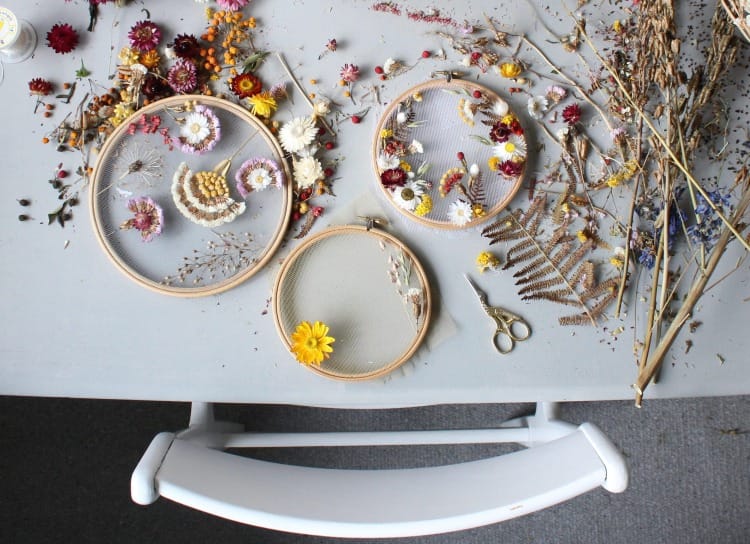
The Process
From her current home in North Yorkshire, UK, Prinku gathers materials and ideas for her work from her garden and through her walks in the local countryside. She doesn't require the exotic for her work and so finds plenty of what she needs all around her, including garden flowers such as poppies and delphinium, and "weeds" such as daisies, dandelions, and forget-me-nots.
Because she has found through experience that fresh flowers can dry into unpredictable shapes, leaving gaps where she doesn't want them in her work, she works instead with dried flowers. She likes having the greater control that dried flowers give her over the outcome of her designs.
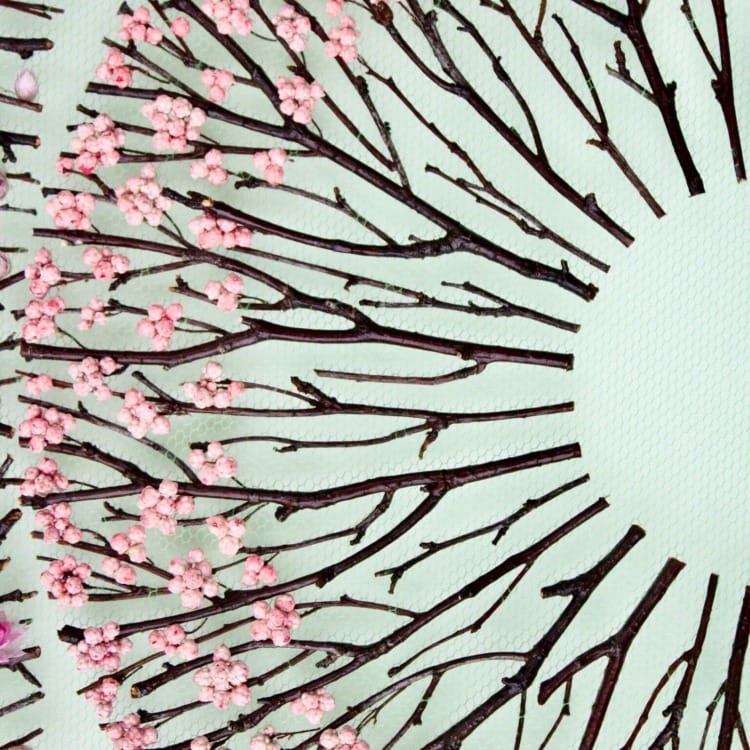
Once she has dried the flowers, the painstaking process of her stitching work begins. Dried flowers are vey fragile, and connecting the delicate flower stems that are less than a third of a millimeter in width through the mesh of the tulle is tricky and painstaking work.
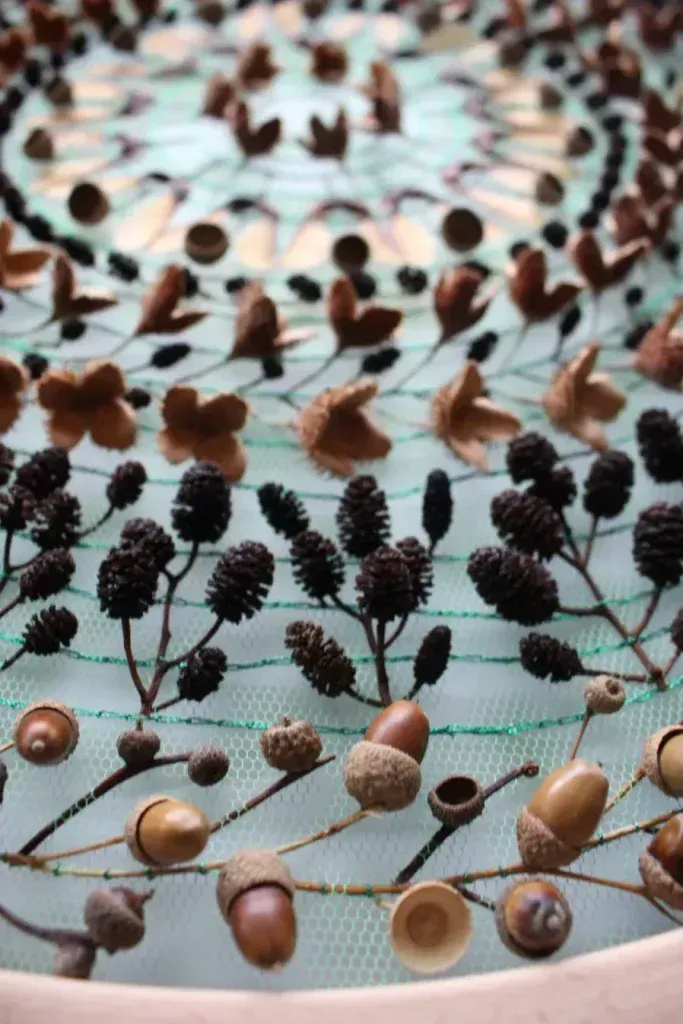
Because this requires all of her attention and focus, it turns the work into a kind of meditation for her. She gets completely absorbed in the work and "gets into a flow" that can makes hours fly by. The work can't be rushed since the flowers can easily break, so it creates a built-in discipline of patience with the process for the work to come out the way she has envisioned it.
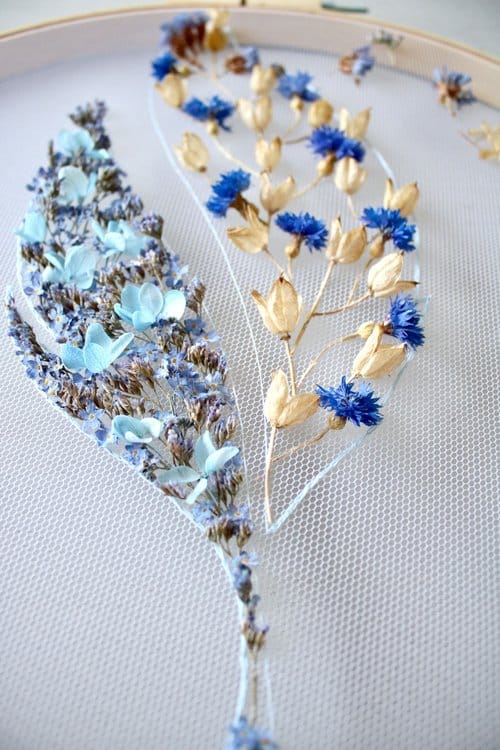
Much of the small detail work is done freestyle, but for larger pieces in particular, careful planning has to be set in place first in order to make the freestyle work possible. This involves creating an outline with stitches which she then fills by working the plant itself through the mesh.
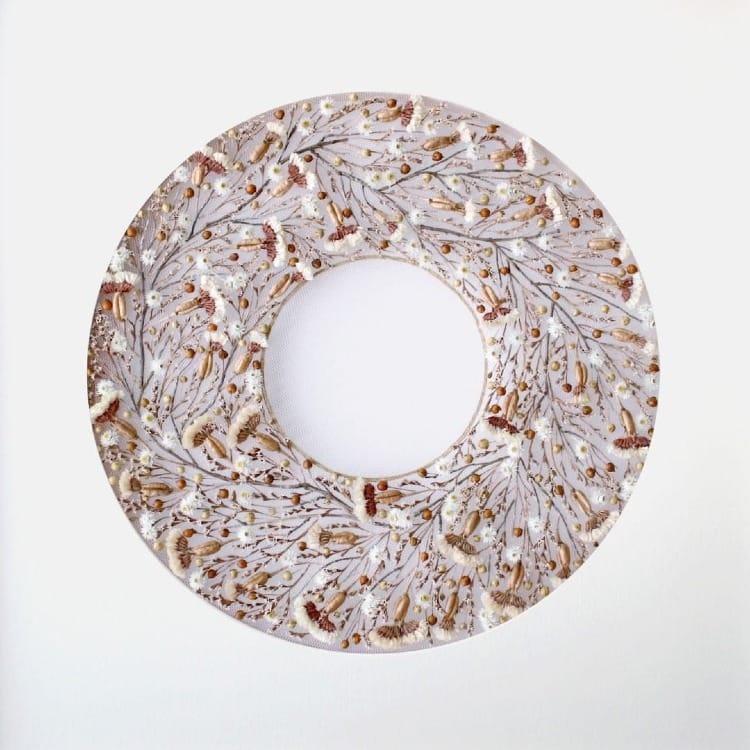
After she has removes this outlining thread, the tulle becomes an invisible canvas that holds the flowers and other plant pieces in place. They often appear to float without support within the frame.
(To watch a fascinating video of her process from start to finish, I highly recommend the video at the end of this article).
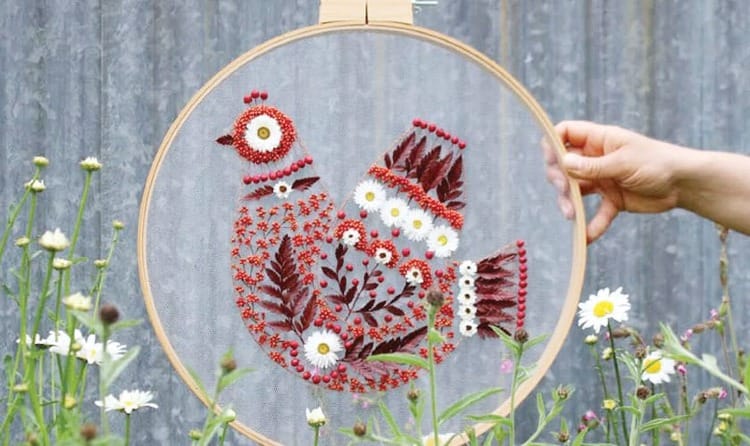
The Perspective
Some of Prinku's design inspiration comes from her home country of Moldova, which has a long and deep heritage of hand embroidery and weaving. It is her personal innovation that has translated those traditional embroidery techniques into something new by using botanical ingredients as the threads in her work. She experimented with a wide variety of methods and materials before landing on her current techniques and practices.
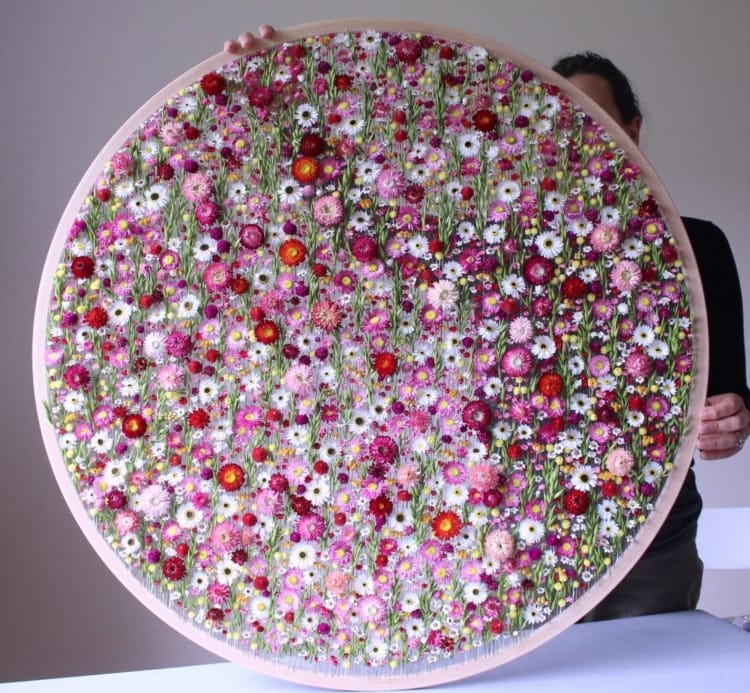
She draws not only the plant material she uses in her pieces from the countryside around her, but also much of the patterning and interaction between parts that are incorporated into her work. As she walks and forages, she is also always noticing what grows together, how colors interact with each other, and the life cycles and seasonal patterns, including the changes in the individual plants and flowers she is seeing and collecting.
As she says, her art has made her much more observant of the details of what is around her in nature. The experience of creating artworks with flowers makes me think constantly about how different kinds of plant fit together visually, and I find that sharpens my observations of how they interact in nature – I notice many more details on walks than I used to before I started creating with natural materials, and I’m more alert to the changing of the seasons. In particular, I’ve also come to appreciate that each stage of a plant’s life has its own beauty, from bud to bloom to seedpod.
She sees plants that she had previously looked, such as weeds, differently now. Seed pods, which at one time would have merely been a reason to deadhead a plant, have become a different and interesting stage of the plant to her.
Although she lives in the countryside now, she has also lived in cities and considers it necessary for people to be around plants wherever you are so that you are reminded of your connection to the living world and the fact that we are all rooted in nature.
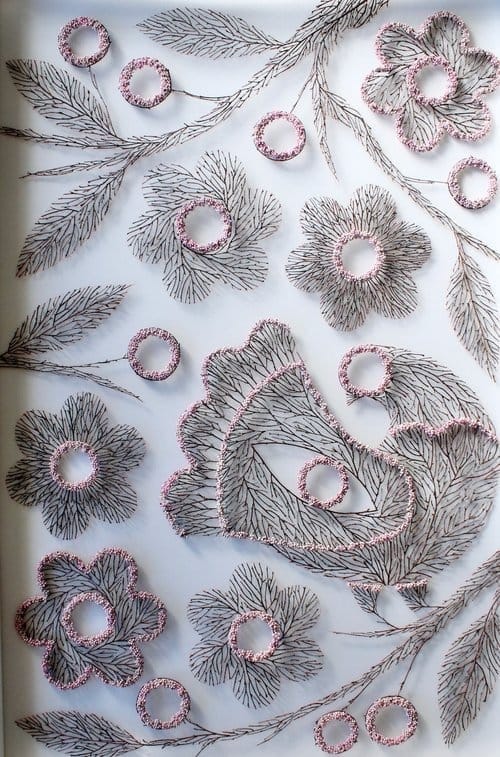
She describes a piece she made in 2022, called Connections (Part 2 of 3 pictured above), which was her largest-scale work to date, in this way:
The piece is inspired by the unity of nature, with the same vein-like branching structures bringing life to both flora and fauna. It speaks to the connectedness of natural systems at a time when biodiversity is under threat, reminding us that we are all part of a greater whole.
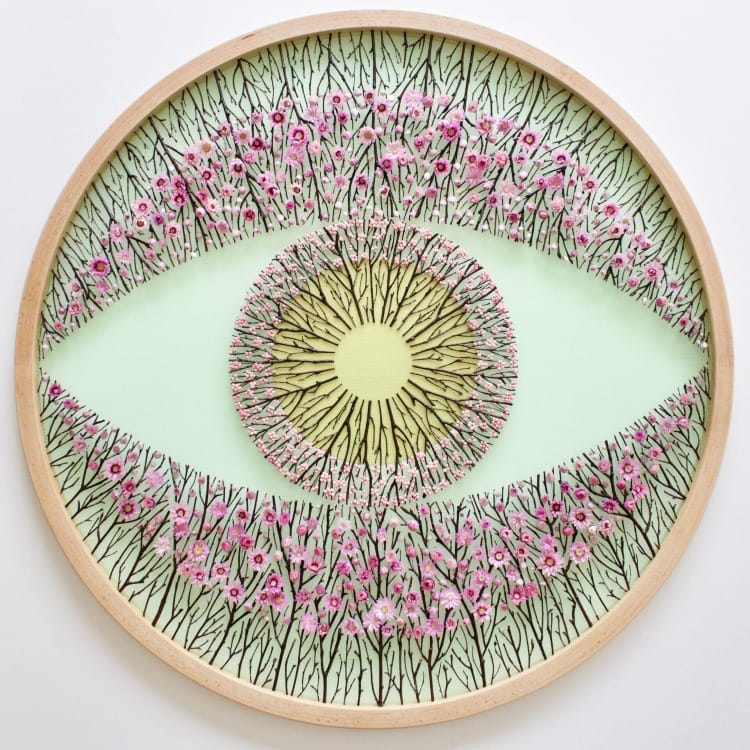
Another particularly striking piece is The Light in Your Eye, which Prinku describes as follows: Like sunlight glinting through a forest, the gold leaf backing to the pupil highlights the metaphorical “light in one’s eyes” that is said to be a window to the soul. The use of natural materials embodies light as being, through photosynthesis, the root of all life. The combination of inward- and outward-growing branch-work speaks to how information enters our minds and we “shed light” on the world through our understanding.
As this quotation says, our understanding does affect how we see the world. A naturalist will see a place differently from a housing developer. If we understand the parts of creation to be valuable in and of themselves, we will see and understand them differently than if we experience them as disparate resources that only hold value in how they are useful to us. It is also true, as Prinku says, that seeing the world does change how we come to understand it.
Granting anything our time and absorbed attention can give us a less self-oriented perspective and help us see connections we would miss if we weren't given this gift of self-forgetfulness.
Reflection Questions: Are there practices that absorb you in a way that gives you a fresh perspective both on the wider world and your connection to it?
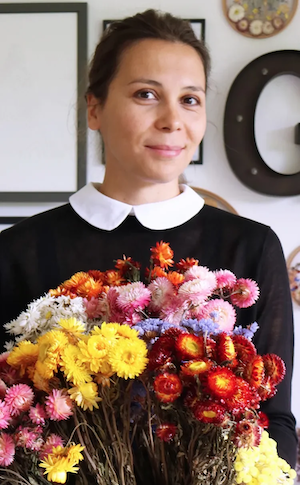
You can see more of Olga Prinku's work on her website. Below is a video showing her at work.
Feel free to leave a comment below or contact me directly at louise.conner@circlewood.online.
Louise
Want to learn more?
Find out more or support our parent organization by clicking below.